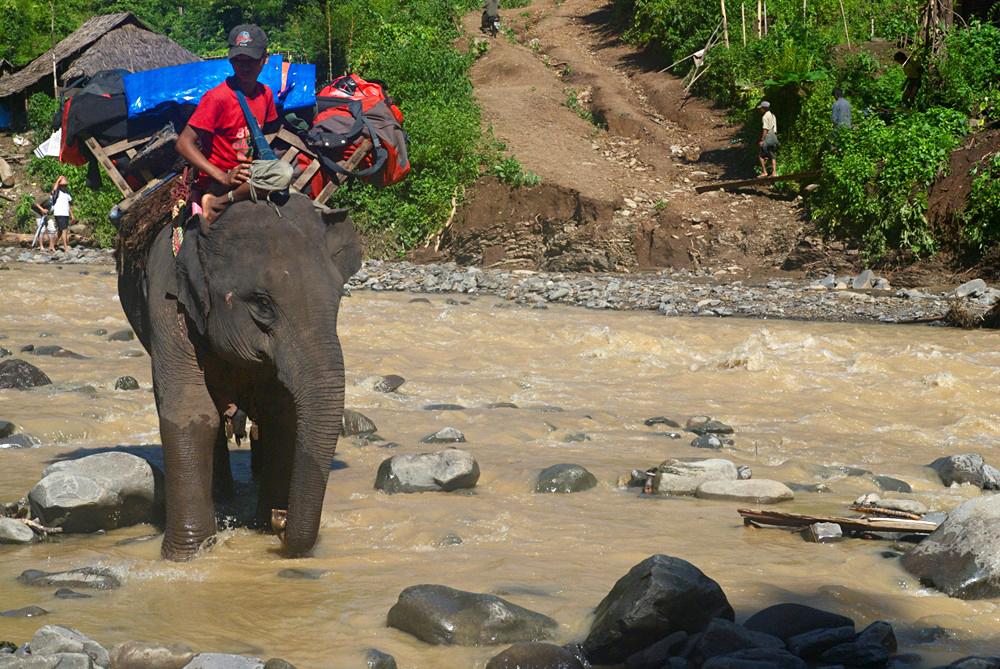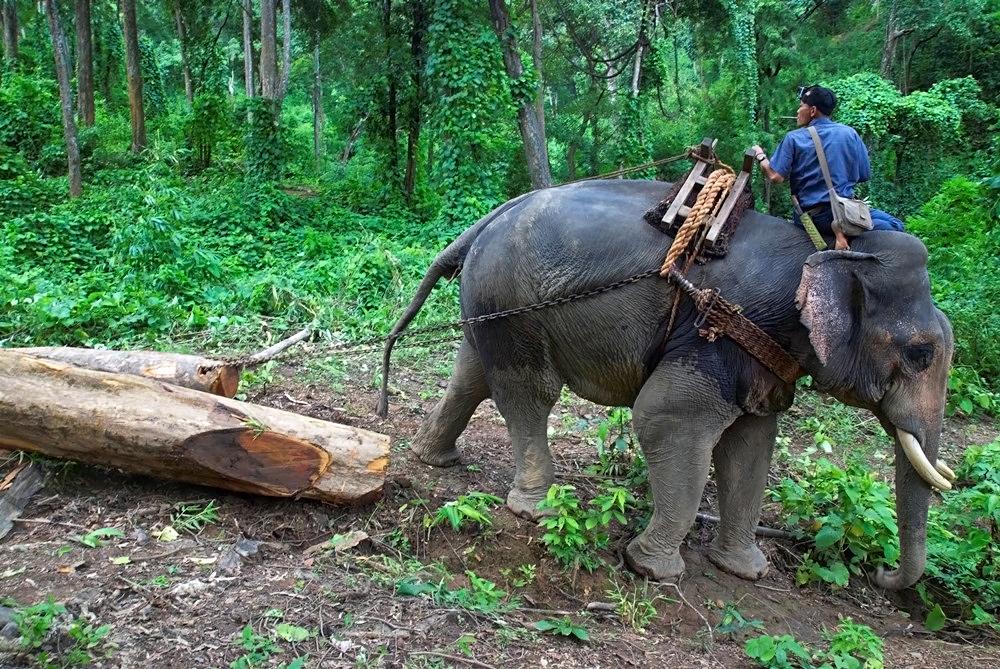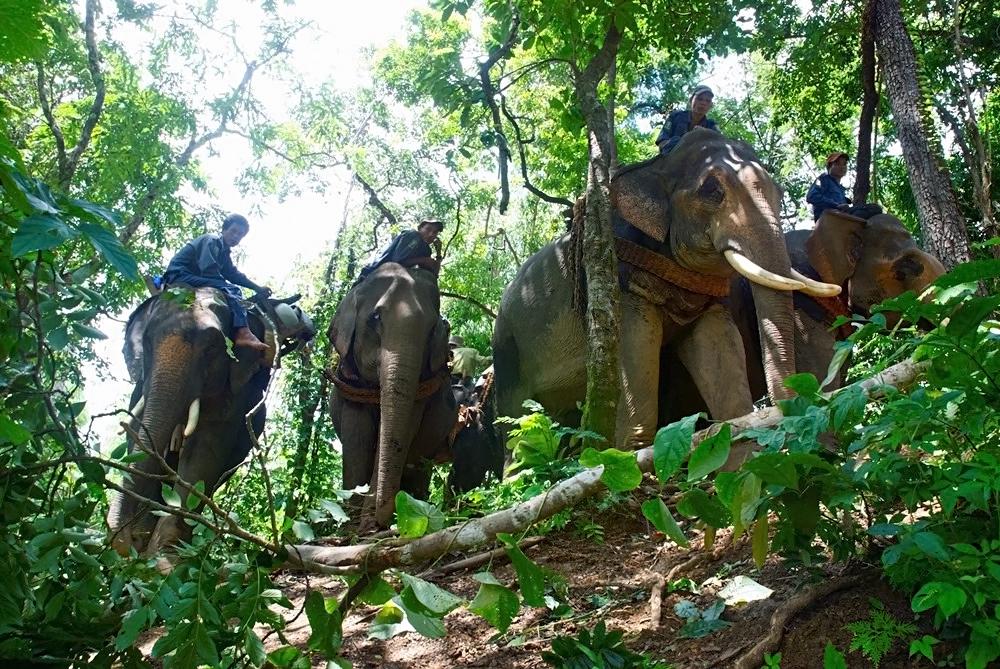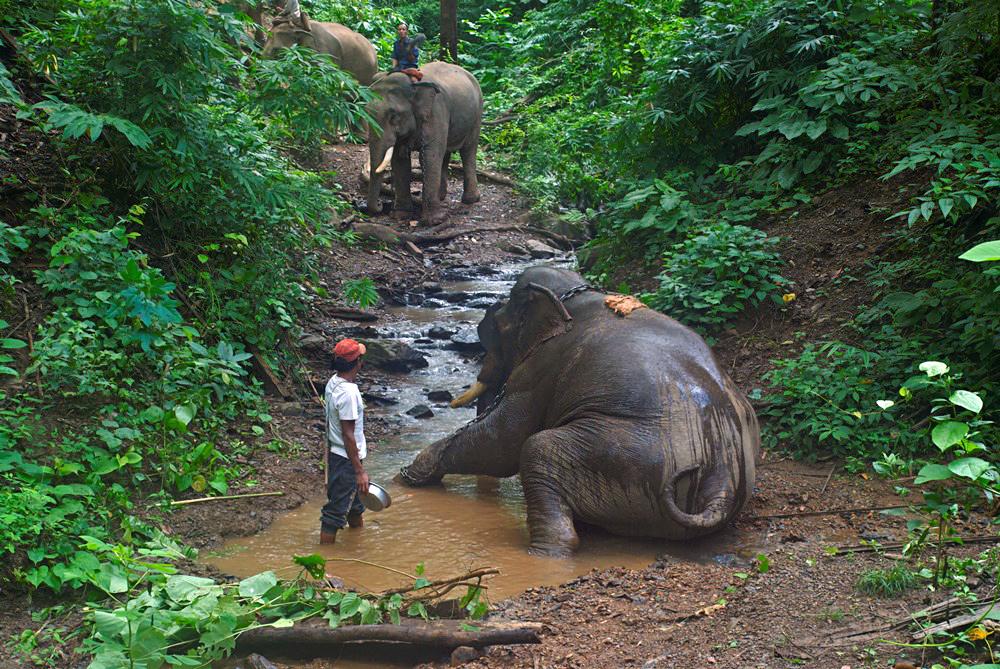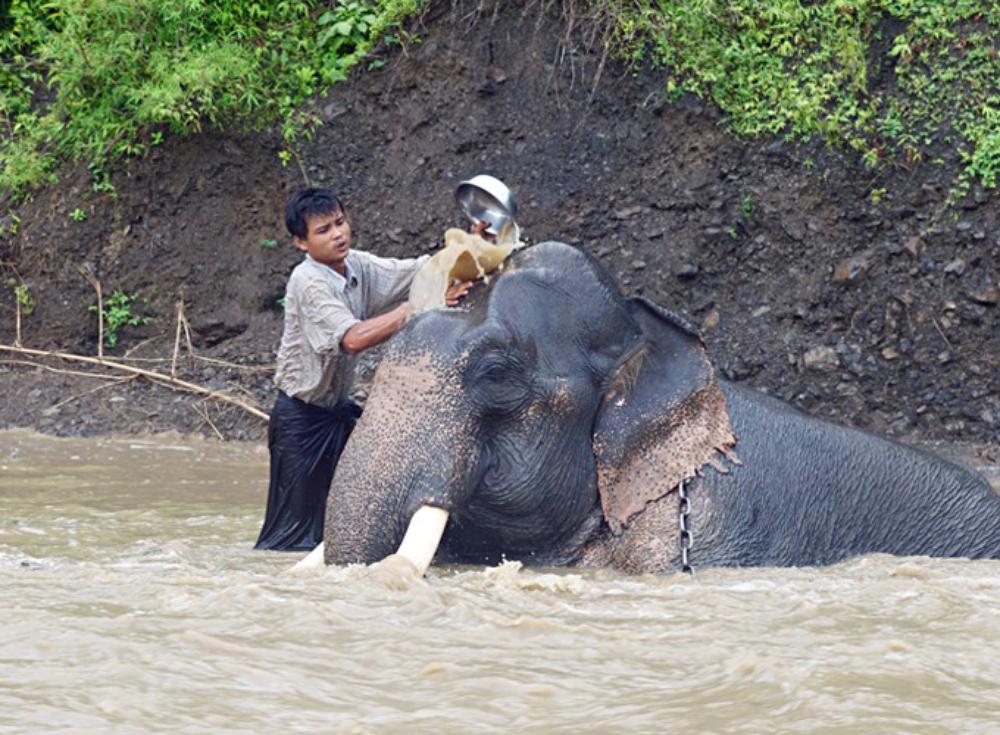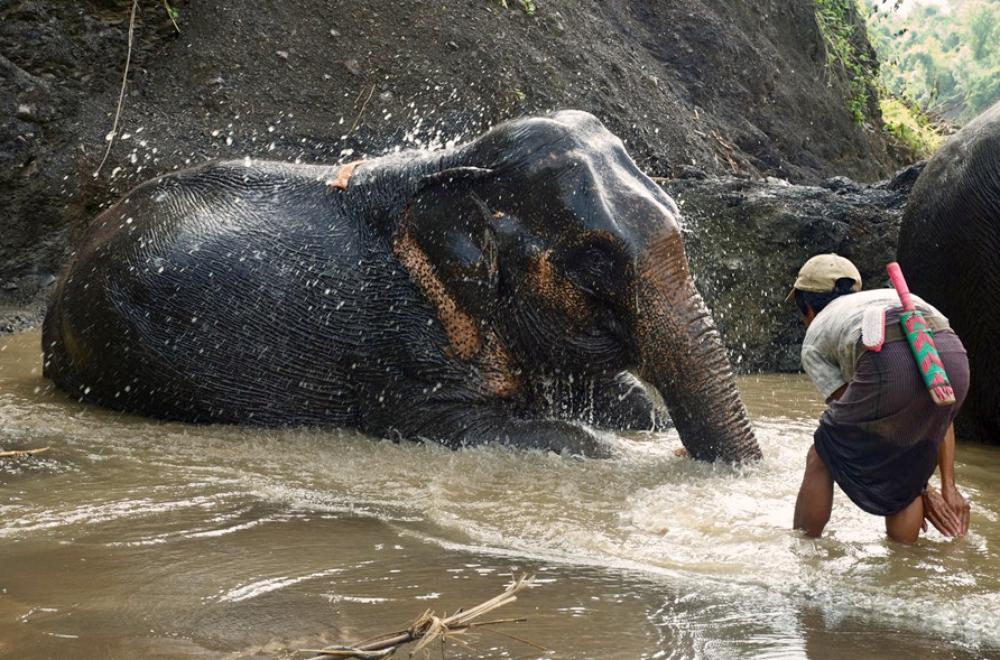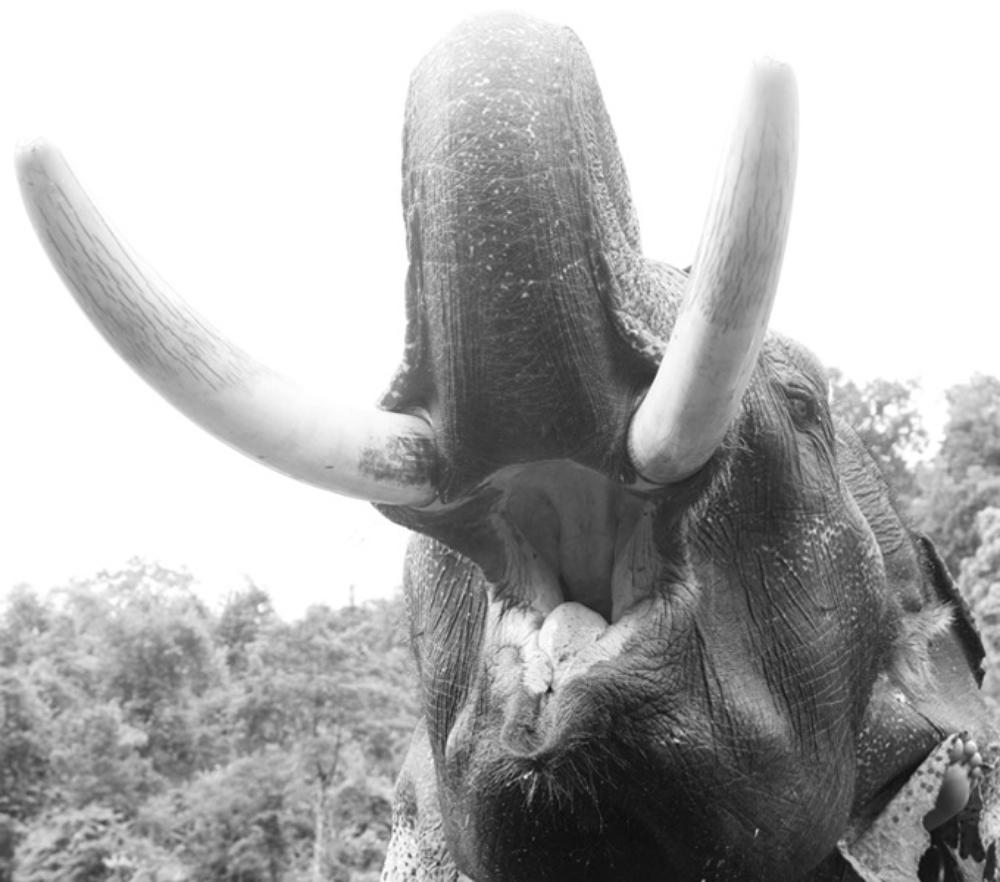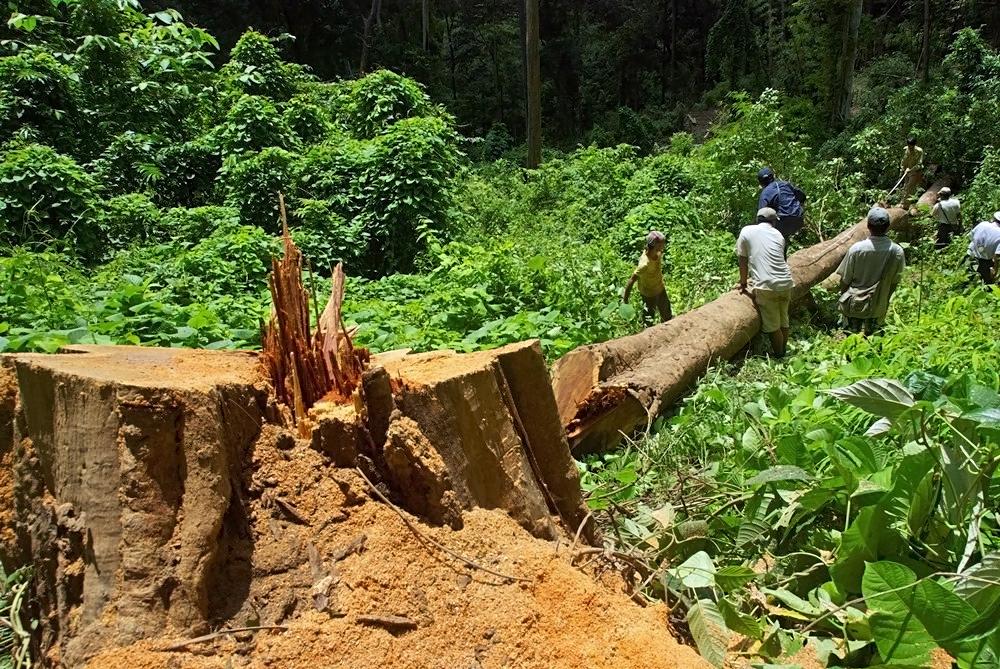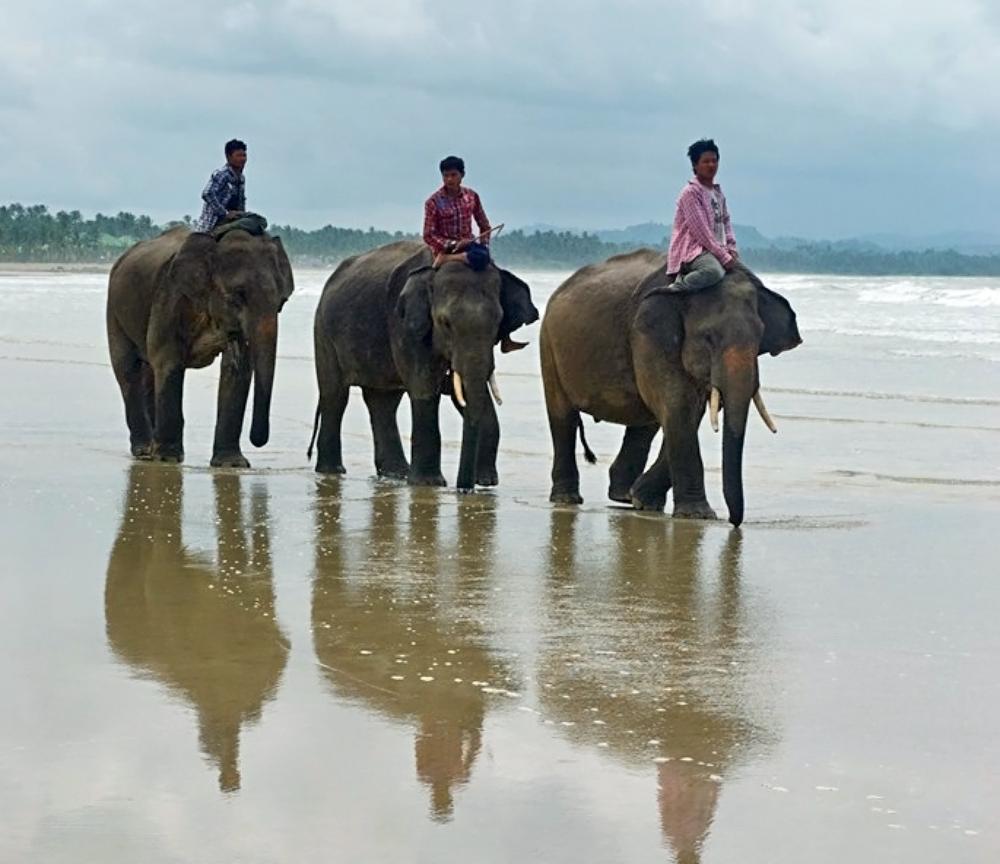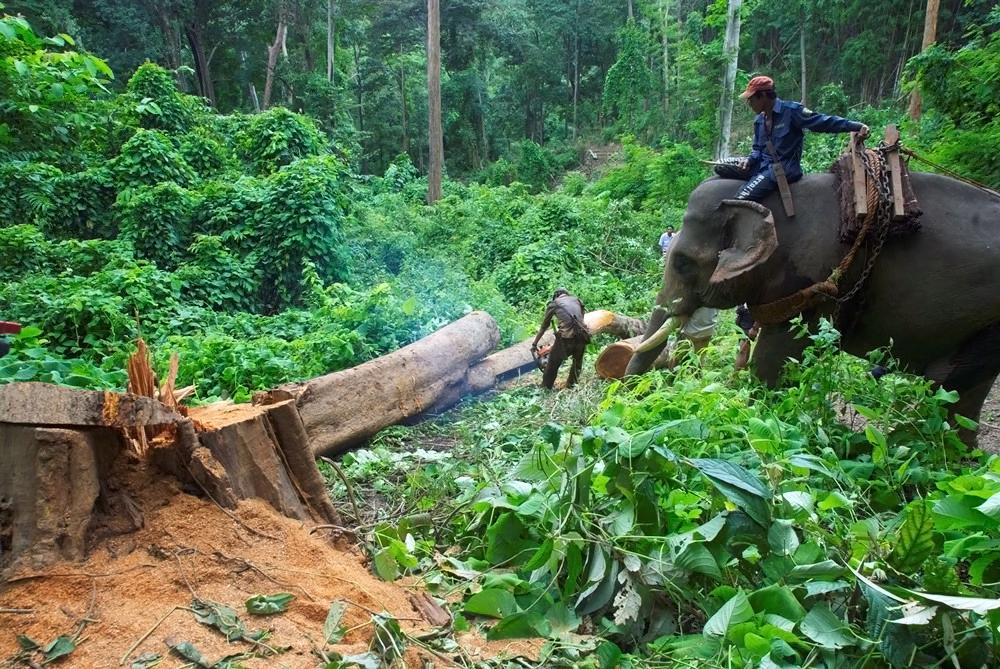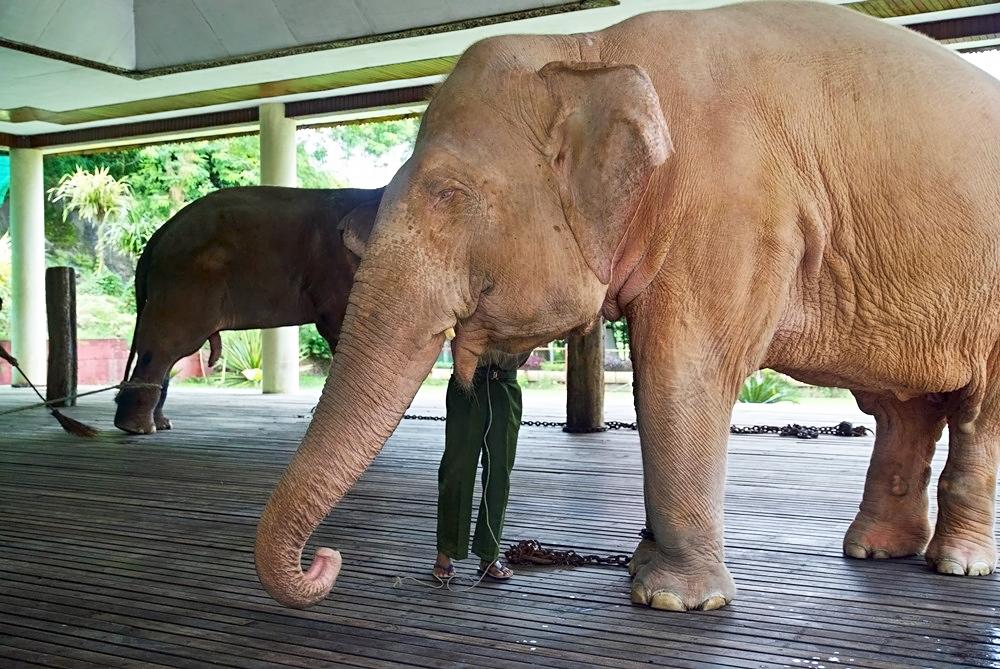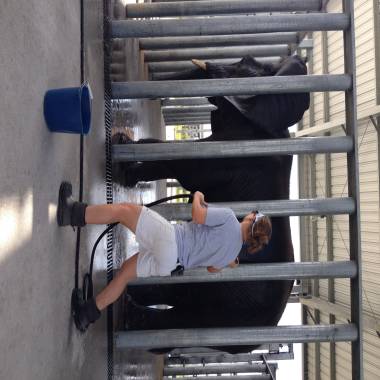"We will never buy or sell an elephant. We don't believe that that's right."
The story of Thandi and Moyo, below, immediately captured my attention. After their families' were killed in the 1980's, they have been "inseparable." NBC News did a great job explaining the poaching problem at hand, and the remarkable story of a few in Florida.
----->><<------->><<-------->><<-------->><<-----
FELLSMERE, Fla. -- It was dawn, and African elephant Thandi stood calmly chewing her early morning meal of tree leaves and twigs -- until she caught sight of our TV crew, gingerly approaching.
The 9,000-pound matriarch paused, took a step forward, and stared at the man she's known for 16 years: John Lehnhardt, the executive director of the new National Elephant Center.
"It's going to be all right Thandi," he reassured her.
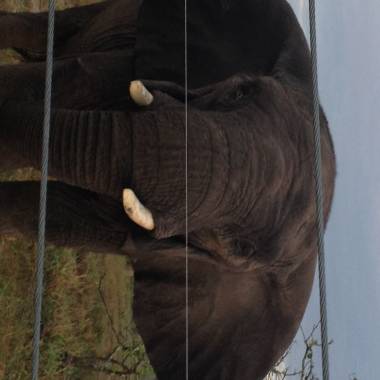
Erika Angulo/NBC News
Thandi, an African elephant, stares at the NBC crew from behind an enclosure.
Just a few yards away, her friend of 20 years, Moyo, and her two male calves Tufani and Tsavo, looked to Thandi for guidance.
"She's trying to make sure you're not a threat to her family," Lehnhardt said.
A few minutes went by, with only mosquitoes breaking the stillness. Suddenly, Thandi turned back to resume her breakfast. She had given her silent consent, allowing us to visit her home.
Thandi is part of the first elephant family to live in the National Elephant Center in Fellsmere, Fla., which opened earlier this year.
Supported by zoo donations, the 225-acre facility aims to preserve the threatened species while also offering a home to any elephant in need. By providing an environment closer to the animals’ natural habitat, managers of the sprawling park hope to eventually help elephants reproduce and enjoy a better quality of life.
But that doesn't mean the baby elephants will be sold.
"We will never buy or sell an elephant. We don't believe that that's right," said Lehnhardt.
The center's mission is to function as a Plan B, in case conservation efforts in the wild do not succeed.
“It’s important for us to have a backup plan,” said Lehnhardt, who plans to provide a home to 45 elephants. “We want to be able to develop a self-sustaining population of elephants.”
Elephants in Africa are being killed at a rate of 35,000 to 50,000 a year for their ivory, according to conservation experts. That means on an average day, 96 elephants lose their life to poachers.
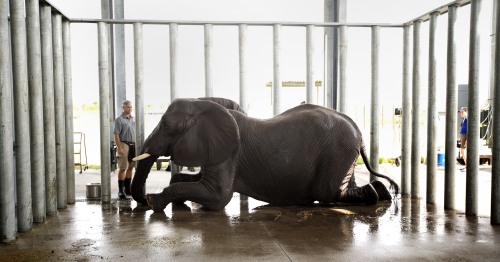
J Pat Carter / AP
Jeff Bolling, the CEO of the National Elephant Center near Fellsmere, Fla., checks one of the four African elephants living in the heart of Florida's citrus grove region on Sept. 4, 2013. The elephants are on loan from Disney. The land is leased from a private citrus grove at $1 per year.
At that rate, African elephants could be extinct in the next decade, said Washington State University professor Sam Wasser. His organization, Conservation Biology, has been tracking ivory seizures and advocating for tighter international anti-poaching law enforcement for decades.
Wasser believes organized crime groups are driving the poaching because ivory sales are so profitable. "The wildlife trade has now become the fourth largest transnational organized crime in the world, just under drugs, weapons and human trafficking," he said.
A pound of ivory can fetch $700 in China. Poachers sometimes resort to sharpshooters in helicopters to kill dozens of elephants in minutes, while workers on the ground quickly sever the animals’ faces to remove the pricey tusks.
Another emerging killing technique is cyanide poisoning. Several days ago the The Telegraph reported 300 elephants in Zimbabwe’s largest national park have been killed using that method over the past three months alone.
Often poachers leave only the youngest elephants of a heard alive, favoring the adults and their large tusks.
During the '80s, Thandi and Moyo were young, nursing calves when their families were killed in Zimbabwe. The two have been inseparable ever since.
Lehnhardt says their friendship has helped them cope with the "tremendous trauma'" they endured when they were orphaned. They were sold as babies to a Tacoma, Wash., zoo in 1983, and then to Disney's Animal Kingdom in 1997.
Disney allowed the two friends and Moyo’s calves to move to the National Elephant Center in May to give the family more space to enjoy their time together before Tufani leaves the herd. He’s 10 years old. Male elephants separate from their herds in their teens, or are pushed out by the family matriarch.
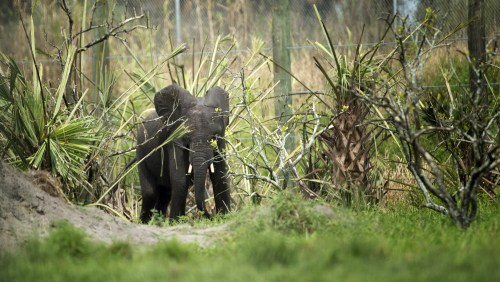
J Pat Carter / AP
A young elephant makes its way through the remains of an old citrus farm near Fellsmere, Fla on Sept. 4, 2013. Officials at the center, quickly learned the elephants ate oranges from the old trees, eating up to 300 a day.
“They’re kind of like a teenage boy in our society,” said Jeff Bolling, Chief Operating Officer of the Center. “They just want to go roughhouse and play real hard then the females kind of help the process and push them out of the house a little bit.”
The Center sits on a citrus grove, and Moyo was first to notice the juicy Valencia oranges growing on trees.
Florida may be known as the land of theme parks and tourists, but it's now home to a place designed to save elephants. Mark Potter takes us to the National Elephant Center.
“She sucked the orange to the end of her trunk, which is really part of their nose, and she picked it from the tree, put it in her mouth, and I just saw her eyes light up like, 'Oh my,'" Lehnhardt said. “They all started picking oranges like crazy.”
Adult elephants can consume 300 pounds of food in a day.
Many conservationists oppose the idea of holding elephants captive. But for the close to 500 elephants already in captivity in the U.S., Lehnhardt says the National Elephant Center may provide a future home. He expects some zoo managers to ask if they can send elephants there to retire.
“We have a responsibility to provide them the best life that we can,” he said.
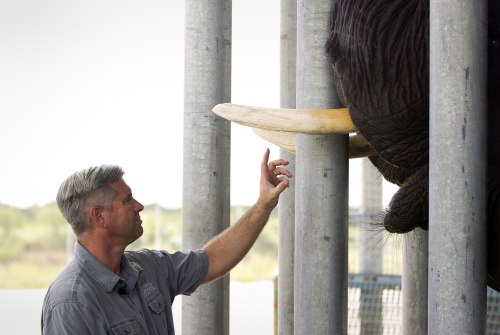
J Pat Carter / AP
Jeff Bolling, the CEO of the National Elephant Center near Fellsmere, Fla.
More than $2 million in donations from zoos paid for the facility's construction. Unlike a zoo, however, the center is not open to the public.
“We just want elephants to be elephants,” said Lehnhardt, who has dedicated most of his life to helping these threatened animals. "They are family oriented. They're honest and straightforward. We should learn from them."
~Erika Angulo
NBC News
Go make a difference!
